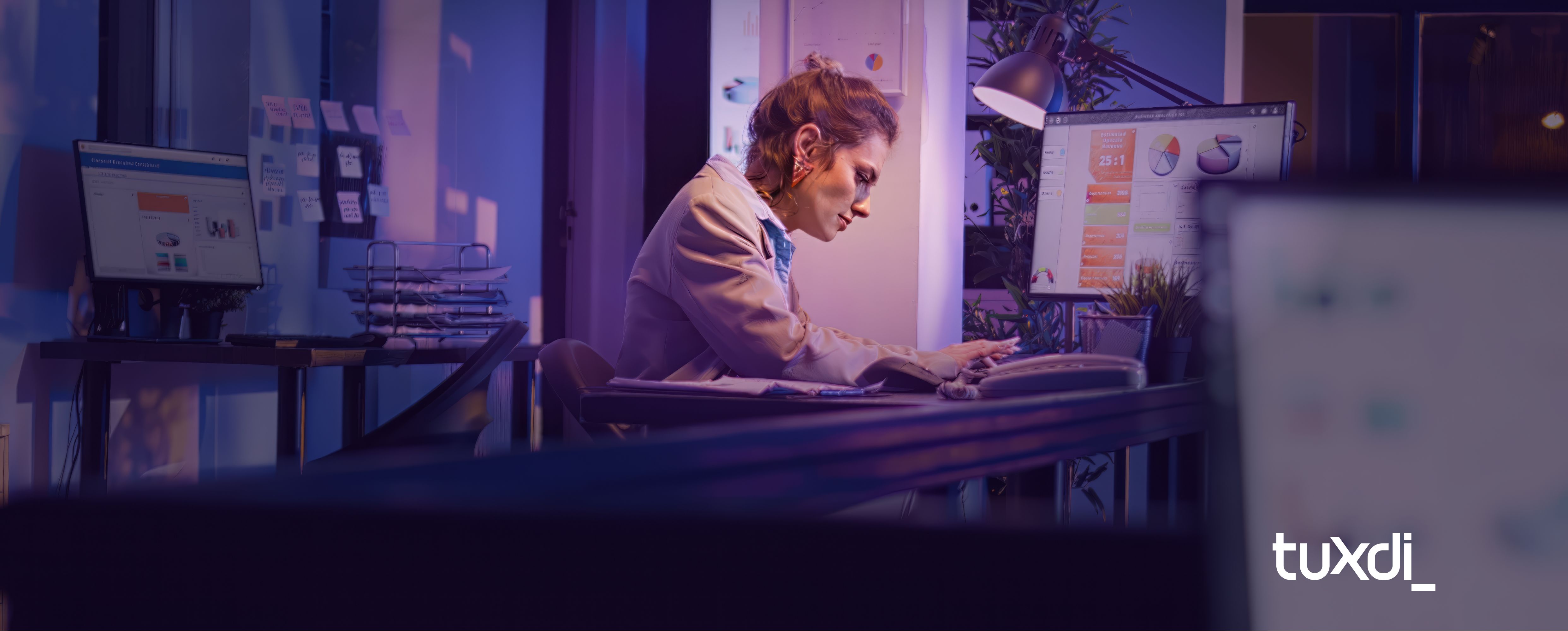Work has already changed — but what’s coming will be even more disruptive.
Generative AI, immersive realities, biotechnology, and decentralized work models are transforming not only what we do, but how we organize to do it.
Companies and professionals who anticipate these transformations will be better prepared to lead innovation and attract the talent best equipped for the challenges ahead.
1. Generative AI as the Universal Copilot
Until recently, artificial intelligence focused on automating repetitive tasks and optimizing processes. In the coming years, it will evolve into a creative and strategic collaborator.
Professionals across all disciplines — from marketing and design to law and engineering — will work side by side with AI to ideate, write, program, and make data-driven decisions.
Productivity will multiply, but so will the need for ethics, oversight, and critical thinking. The question will no longer be whether to use AI, but how and why.
Future example: architects co-designing buildings with AI systems capable of projecting sustainability and energy efficiency in seconds.
In the next decade, the advantage won’t be having AI — it will be knowing how to lead it.
2. Mixed Realities: Working in Immersive Spaces
Remote work was only the beginning. Immersive realities (VR, AR, XR) will take digital collaboration to the next level.
Instead of flat screens, teams will meet in three-dimensional virtual environments where they can share prototypes, visualize data, or simulate complex scenarios.
Applications will span multiple industries:
Meetings in virtual offices that replicate real workplaces.
Technical training through hyper-realistic simulators that reduce risks and costs.
Collaborative 3D design, where global teams build and iterate in real time.
Future example: engineers from different countries collaborating in a virtual industrial plant before it’s built physically.
Distance will no longer be the challenge — designing meaningful, immersive work experiences will be.
3. Brain–Computer Interfaces (BCI): Working with the Mind
It may sound like science fiction, but Brain–Computer Interfaces (BCI) are already in experimental stages and could reshape how we interact with technology.
These interfaces allow users to control devices using neural impulses, opening new possibilities for accessibility, creativity, and productivity.
Inclusion and accessibility for people with physical disabilities.
New creative workflows, where ideas move directly from thought to design.
Closer human–machine integration, raising essential ethical and legal questions.
Future example: an industrial designer controlling 3D modeling tools through thought alone.
The human mind will become the new keyboard.
4. New Models of Work Organization
The future of work will be more flexible, decentralized, and project-based. Rigid hierarchies will give way to agile, globally distributed teams connected through digital platforms.
Key emerging trends include:
DAOs (Decentralized Autonomous Organizations): self-managed communities with blockchain-based governance and automated payments.
Smart contracts: agreements that execute automatically when specific conditions are met.
The talent economy: professionals selected for their verified skills and digital reputation, not geography.
Future example: a Latin American tech startup working with global developers and designers under a DAO system that transparently tracks and rewards every contribution.
The future of work won’t be a place — it will be a network.
5. The Human Factor as the Ultimate Differentiator
The more technology advances, the more human skills become essential. Machines can analyze and execute, but they still can’t replicate empathy, creativity, or vision.
The most valuable skills for the next decade will include:
Critical and systemic thinking, to make complex decisions with context.
Empathetic leadership, capable of managing hybrid and multicultural teams.
Ethics in automation and AI, defining limits and responsibilities.
Interdisciplinary creativity, blending technology, art, science, and business.
Future example: a project leader managing AI, VR, and blockchain teams whose success depends not on the tools, but on their ability to inspire and connect people.
Technological innovation without human purpose is just noise.
"We’re at a turning point where the definition of work changes every day. Companies that understand technology doesn’t replace talent — it enhances it — will set the pace. At Tuxdi, we believe innovation should always serve a human purpose: improving how we create, collaborate, and learn."

Fabricio Defelippe
CEO of Tuxdi
Conclusion
The future of work isn’t a place where machines replace people — it’s a reality where technology amplifies human potential.
Organizations that invest today in emerging digital skills and human-centered capabilities will be the ones shaping the next decade.
At Tuxdi, we believe adapting to the future isn’t about waiting for it — it’s about building it today.
🚀 Prepare your company for the future of work.
Let’s design the future together.
You are one step away from taking your project to success
2201 Menaul Blvd NE STE Albuquerque, NM 87107

